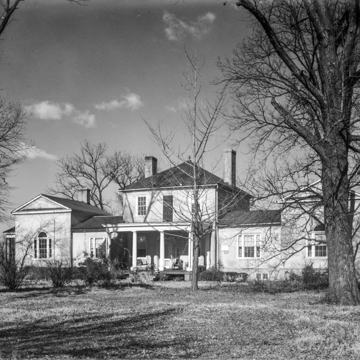One of Virginia's finest Palladian mansions, the stabilized residence awaits restoration. Although not his principal residence, Battersea was built as a villa for John Banister, a Revolutionary War delegate, congressman, signer of the Articles of Confederation, and first mayor of Petersburg. For this house, Banister employed the five-part massing advocated by Palladio for the design of villas and farmhouses. The central block of the brick house contains a lateral passage with one of the earliest Chinese lattice staircases in the region and a saloon that probably served as a summer sitting room. The principal parlor was located in the east hyphen with the dining room in the adjoining pavilion. The west end served as the private block, with a chamber located in the hyphen separated from the main block by a small passage. The pavilion on the west end, originally with no finish on its walls, functioned as a servants' hall. To create the balanced design in accord with the Palladian model, the two end pavilions were one-and-a-half stories in height, but curiously the upper floors were not initially accessible. In 1823, John Fitzhugh May purchased the site and undertook an ambitious remodeling that included the addition of Palladian windows on the pavilions, triple windows on the hyphens, and Greek Revival porches. To mask the changes made to the masonry, the exterior walls were painted red. When this was deemed an insufficient veil, in the 1840s the exterior was stuccoed in imitation of stone. The City of Petersburg acquired the house in 1985.
You are here
Battersea
If SAH Archipedia has been useful to you, please consider supporting it.
SAH Archipedia tells the story of the United States through its buildings, landscapes, and cities. This freely available resource empowers the public with authoritative knowledge that deepens their understanding and appreciation of the built environment. But the Society of Architectural Historians, which created SAH Archipedia with University of Virginia Press, needs your support to maintain the high-caliber research, writing, photography, cartography, editing, design, and programming that make SAH Archipedia a trusted online resource available to all who value the history of place, heritage tourism, and learning.

